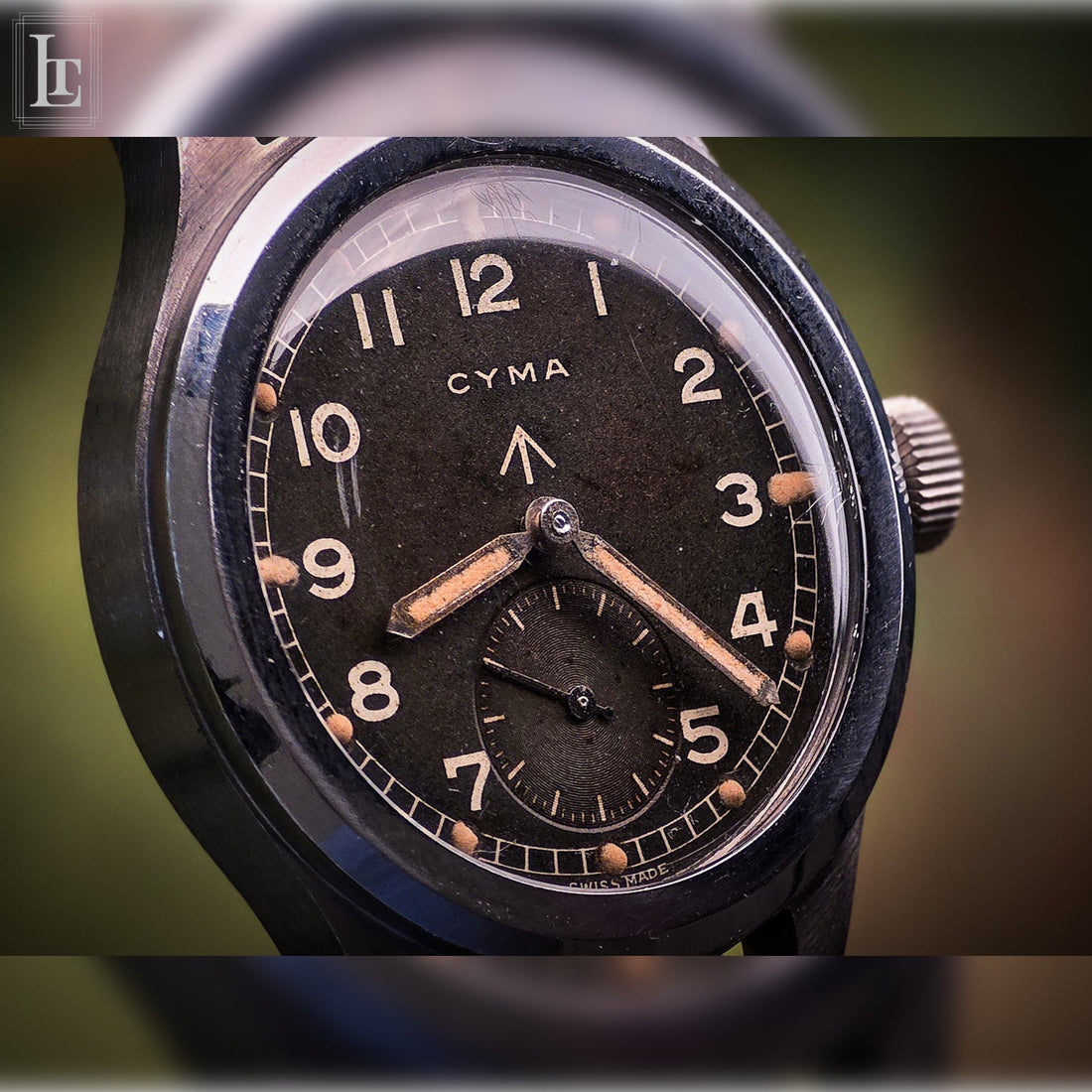The Enduring Allure of the Dirty Dozen: Military Heritage and Horological Excellence
Source: Horological Journal – Year 2008

For collectors and enthusiasts, few military watches are as legendary as the “Dirty Dozen”-a set of twelve timepieces commissioned by the British Ministry of Defence (MoD) during the closing years of World War II. Revered for their rugged design, historical significance, and technical innovation, these watches have become icons in the world of horology.
Why the Dirty Dozen Were Commissioned
In the early 1940s, as the demands of modern warfare intensified, the British Army recognized the need for a robust, reliable wristwatch that could withstand the rigors of combat. Existing civilian and military-issue watches were found lacking-often too fragile, insufficiently waterproof, or simply not precise enough for military operations.
To address this, the MoD drew up a set of specifications for a new “Watch, Wrist, Waterproof” (W.W.W.). These requirements called for:
-Highly legible black dials with white Arabic numerals
-Luminous hands and markers for visibility in low lightSub-seconds at 6 o’clock
-Durable, waterproof cases
-Shock-resistant movements with at least 15 jewels
-Shatterproof Perspex crystals
-Stainless steel or robust chrome-plated cases
-Fixed lugs for secure strap attachment
Twelve Swiss manufacturers-Buren, Cyma, Eterna, Grana, IWC, Jaeger-LeCoultre, Lemania, Longines, Omega, Record, Timor, and Vertex answered the call, each producing their own interpretation of the W.W.W. specification. Collectors would later dub these the “Dirty Dozen,” a nod to the 1967 war film, though the watches themselves predate the movie by over two decades.

The Fascination: Utility Meets Design
What sets the Dirty Dozen apart is the marriage of military utility with classic design. Each watch, while adhering to the MoD’s functional blueprint, expresses the unique character of its maker. The black dials, luminous markers, and robust cases exude a purposeful aesthetic that remains timeless. The broad arrow on the dial and caseback-signifying British government property-adds a further layer of authenticity and intrigue.
The Dirty Dozen watches were not mere accessories; they were precision instruments regulated to chronometer standards. The Omega models, for example, used the celebrated Calibre 30T2, adjusted for exceptional accuracy. Similarly, Longines equipped its W.W.W. with the Calibre 12.68Z, featuring both shock protection and anti-magnetic properties-an innovation that placed it ahead of its peers.

The Superiority of Steel-and the Appeal of Larger Cases
While all Dirty Dozen watches were built to endure, not all cases were created equal. Some brands, such as Buren, Jaeger-LeCoultre, Lemania, Record, Timor, and Vertex, utilized chrome-plated base metal for the upper case, which, while serviceable, was more prone to wear and corrosion over time. In contrast, Cyma, Eterna, Grana, Longines, and Omega produced cases entirely from stainless steel, offering superior resistance to perspiration, moisture, and the elements.
For collectors, the steel-cased models are particularly desirable-not only for their resilience but also for their enduring luster and patina. Among these, the Cyma and Longines stand out for another reason: size.
- Cyma W.W.W.: With a case diameter of 37mm, the Cyma is among the largest of the Dirty Dozen, offering a substantial wrist presence that feels modern even today. Its steel case, robust Calibre 234 movement, and classic design make it a favorite for those seeking both authenticity and wearability.
- Longines W.W.W.: At 38mm, the Longines is the largest of the group. Its size, combined with the technical sophistication of the Calibre 12.68Z (featuring both shock and anti-magnetic protection), sets it apart as the most advanced and imposing of the Dirty Dozen. The Longines’ case construction, with a screw-down back and threaded crystal retaining ring, ensured superior water resistance-a critical feature for soldiers in the field.
The larger diameters of the Cyma and Longines models not only enhance legibility but also cater to contemporary tastes, making them especially sought after by modern collectors.

Legacy and Collectability
Approximately 140,000 to 150,000 W.W.W. watches were delivered to the British Army, representing a fraction of the millions of Swiss watches exported during the war. Yet, their scarcity, combined with their rich history and technical merit, has made the Dirty Dozen a cornerstone of military watch collecting.
Many of these watches continued to serve long after the war, seeing action in conflicts as late as the Falklands and Gulf Wars. Their continued functionality is a testament to the quality of their construction and the foresight of their designers.

Conclusion
The Dirty Dozen watches are more than relics; they are enduring symbols of ingenuity, resilience, and timeless design. For collectors, owning a Cyma or Longines W.W.W.-with its steel case and generous proportions-is to possess a piece of history that remains as compelling today as it was on the wrist of a British soldier over 75 years ago.
Whether you are drawn by their military heritage, their technical prowess, or their rugged beauty, the Dirty Dozen are a fascinating chapter in horological history-one that continues to captivate collectors and enthusiasts around the world.
References: “On His Majesty’s Service 2,” Horological Journal, September 2008.


